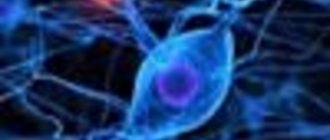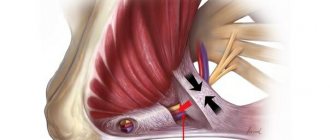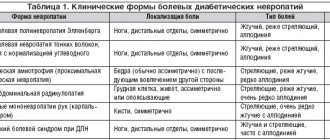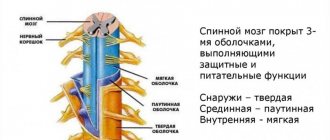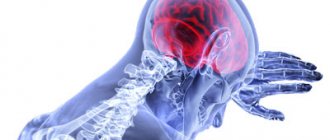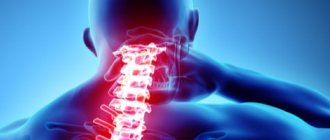Herpes zoster, symptoms and treatment in adults
Herpes zoster is an extremely unpleasant and fairly common disease of a viral nature. Symptoms of the disease appear in different parts of the body. Usually this is the face, limbs, genitals, lumbar back. Sometimes rashes form on other areas of the skin, but on the face most often.
This disease also has certain signs of damage to the nervous system. In addition to shingles, the causative agent of the disease - varicella zoster - can lead to the appearance of chickenpox in children, as well as adults who have not previously suffered from this disease.
What it is?
Herpes zoster is a sporadic disease caused by reactivation of the herpes virus type III (Varicella Zoster virus). The disease is characterized by primary damage to the skin and nervous system with severe complications.
When varicella-zoster viruses enter the human body, they quickly spread through the blood, cerebrospinal fluid and nerve sheaths. Settling in the nerve cells of the spinal ganglia, they persist there for life. Hypothermia, insolation, alcohol abuse, physical and mental trauma, hormonal cycles - everything that attacks the immune system provokes an exacerbation of the disease. Having a tropism for cells of the nervous system, varicella-zoster viruses cause diseases that often occur as an infectious disease of the central and peripheral nervous systems.
Lifelong latent carriage of varicella zoster has been established in approximately 20% of residents of our country who had chickenpox in childhood. Asymptomatic carriage of a “dormant” virus can be lifelong. The main refuge for it is the nerve cells of the body. Under the influence of internal and/or external agents, the virus is activated.
Story
Shingles was known in ancient times, but was considered as an independent disease. At the same time, chickenpox was often mistaken for smallpox for a long time: despite the fact that the clinical differences between these two infections were described back in the 60s of the 18th century, reliable differentiation became possible only at the end of the 19th century.
The infectious nature of chickenpox was proven by Steiner in 1875 in experiments on volunteers. Assumptions about the connection between chickenpox and herpes zoster were first made in 1888 by von Bokay, who observed chickenpox in children after contact with patients with herpes zoster. These ideas were confirmed only in the late 1950s, when T. Weller isolated the pathogen from patients with both clinical forms of infection.
However, epidemiological data turned out to be the most convincing: the incidence of chickenpox in areas of herpes zoster was significantly higher than the average among the population (in areas of herpes zoster the secondary risk of infection is high). In 1974, Takahashi and his colleagues obtained a weakened Oka strain of the “wild” virus, and in 1980 a clinical trial of a vaccine against chickenpox was started in the United States.
Basic information about the disease
Herpes zoster (shingles) (łac. herpes zoster) is a reactivation (activation) of a latent viral infection caused by the varicella zoster virus, VZV, currently called human herpesvirus - 3 - HHV-3 ), the same virus that causes chickenpox when first infected. Thus, all people who have had chickenpox in the past can develop the disease, regardless of whether the chickenpox was mild or severe.
Herpes zoster is manifested by the unilateral appearance of painful, characteristically located blisters on areas of the skin innervated by one vertebral root, called dermatomes. The appearance of skin changes is usually preceded by burning, itching, tingling and pain, which can persist throughout the duration of the disease.
Herpes zoster is contagious to others. After contact with a sick person, people susceptible to infection can get chickenpox.
How can you get infected?
The herpes zoster virus is highly contagious (transmissible), so it easily spreads from person to person through airborne droplets, as well as through contact with the skin of a patient. In this case, the liquid contained in the bubbles formed on the epidermis of those infected with chickenpox or shingles penetrates into the body. For the first time, an infected person becomes ill with chickenpox, after which the virus persists in the body for a long time.
An exacerbation of the disease in the form of herpes zoster can occur due to exposure to a number of provoking factors:
- decreased immunity, severe immunodeficiency states;
- taking cytostatics, chemotherapy, cancer;
- autoimmune diseases, pathological disorders in the blood;
- stress, shock;
- poisoning, intoxication;
- prolonged hypothermia;
- old age (over 65 years).
Chickenpox is a common disease in children, and an adult with a history of this disease can activate the dormant virus by contact with the child. Herpes zoster in children under 10 years of age can occur only in the case of congenital disorders of the functioning of cells of the immune system, as well as in cases of chickenpox in the first months of life.
Shingles (Herpes zoster)
Herpes
25328 August 26
IMPORTANT!
The information in this section cannot be used for self-diagnosis and self-treatment.
In case of pain or other exacerbation of the disease, diagnostic tests should be prescribed only by the attending physician. To make a diagnosis and properly prescribe treatment, you should contact your doctor. Shingles (Herpes zoster): causes, symptoms, diagnosis and treatment methods.
Shingles is an infectious disease whose causative agent (herpes virus type 3) also causes chickenpox.
Since the virus, penetrating the sensitive nerve endings, is integrated into the genetic apparatus of nerve cells, it is impossible to remove it from the body. In people who have had chickenpox, the virus enters a latent (inactive) state.
When the immune system is weakened, the virus becomes more active, affecting the skin. The disease most often develops in the elderly and in people with immunodeficiency.
Causes of the disease
The virus is transmitted from a patient with chickenpox or shingles by contact or airborne droplets. The person who becomes infected initially (most often a child) gets chickenpox. Penetrating through the mucous membranes into the blood and lymph, the virus reaches nerve cells, where it begins to multiply. After recovery, the virus remains in the body for life, often remaining in an inactive state. The awakening of the infection is associated with a weakening of the immune system caused by hypothermia, long-term use of steroid hormonal drugs, immunosuppression (after transplantation), chemotherapy and radiation therapy, as well as a general decrease in immunity in patients with blood diseases, cancer and viral diseases. Herpes zoster is very severe in HIV-infected patients.
Classification of herpes zoster
The clinical picture of herpes zoster consists of skin manifestations and neurological disorders. There are typical and atypical forms of the disease. In the atypical form, an erased course of the disease is possible, in which papules develop in the foci of hyperemia, which do not transform into vesicles.
With herpes zoster, the spread of the pathological process corresponds to a specific area of the skin and does not cross the anatomical midline of the body. In most patients, the appearance of a rash is preceded by a burning or itching sensation in a certain area of the skin, as well as pain, which can be stabbing, throbbing, shooting, paroxysmal or constant. In a number of patients, the pain syndrome is accompanied by general systemic inflammatory manifestations: fever, malaise, myalgia, headache.
Infection of the central nervous system and damage to the meninges can give rise to meningeal, encephalic (symptoms indicate damage by the virus to the brain and/or spinal cord and meninges) or mixed forms of herpes zoster. If the infection spreads along the optic nerve, ophthalmoherpes develops.
When a rash appears over the entire surface of the skin and on parenchymal organs (for example, liver, kidneys), a generalized form of herpes zoster develops. Another type of herpes zoster is hemorrhagic. A characteristic sign is bloody fluid inside the blisters.
Symptoms of herpes zoster
The onset of the disease is accompanied by general intoxication, malaise and fever. Nausea and vomiting are possible. Lymph nodes enlarge.
Severe pain appears along the affected nerve, which can be constant, but more often has a paroxysmal itchy nature, intensifying at night.
They are usually provoked by any irritants: touching the skin, cold, movement. Some patients complain of loss of sensation in certain areas of the skin, which may be accompanied by an increased pain response. Sometimes the pain syndrome in the absence of skin rashes may resemble angina pectoris, myocardial infarction, renal colic or pancreatitis. The period of neuralgia preceding the rash lasts up to 7 days. Then nodules appear on one side of the body, from which bubbles with transparent contents are formed, which gradually become cloudy. After 3-7 days, most of the bubbles dry out with the formation of yellow-brown crusts. When the vesicles are injured, bright red ulcers are exposed. After the sores heal, small scabs or scars remain on the skin.
Most often, rash and pain are observed in the ribs, lower back and sacrum, less often along the branches of the trigeminal, facial and auricular nerves and on the extremities.
In rare cases, mucous membranes are affected.
Diagnosis of herpes zoster
A diagnosis can be made after examining and interviewing the patient. The doctor pays attention to the nature of the rash (localized and unilateral), the type of blisters and complaints of itchy, burning pain. It is more difficult to identify the atypical form of herpes zoster. In the erased form, pain and other neurological symptoms may be absent. For neurogenic disorders, before the appearance of rashes, a diagnosis can be made based on the results of laboratory tests. In this case, histological examination is used, and the virus is isolated in cell culture. The Tzanck test helps quickly confirm the herpetic nature of the rash: in a scraping of material taken from the base of the vesicle, giant multinucleated cells are detected. However, this test cannot determine the type of herpes. Methods of enzyme immunoassay and indirect immunofluorescence reaction are also used. Recently, viral infections have been diagnosed using polymerase chain reaction (PCR).
Is herpes zoster contagious?
If a contact person had chickenpox in childhood and has developed a strong immunity, then the risk of contracting herpes zoster is practically reduced to a minimum. However, in people who have not previously had chickenpox, contact with someone with shingles can lead to the development of chickenpox. This risk especially increases in children and adults over fifty years of age with low immunity.
It should be noted that herpes zoster is contagious during the period of herpetic rashes. During the period of healing and formation of crusts, this disease ceases to be dangerous.
What is the risk of developing herpes zoster?
According to current data from the United States of America, almost one in three people will develop herpes zoster during their lifetime. Anyone who has had chickenpox can develop the disease, including children, but the risk of the disease increases significantly with age. In practice, herpes zoster is a disease of adults, with about half of all cases of herpes zoster developing after 60 years of age. Typically, there is only one episode of herpes zoster in a lifetime. In rare cases, especially in the presence of favorable factors, herpes zoster may occur two or more times.
Is it possible to get sick again?
When the varicella zoster virus enters the human body, it causes chickenpox (varicella). However, after recovery, this virus is not eliminated, but remains in the human body in a latent state. This virus lurks asymptomatically in nerve cells in the dorsal roots of the spinal cord.
Activation of the virus occurs when the body is exposed to negative factors that contribute to a decrease in immunity. In this case, the disease recurs, only not in the form of chickenpox, but in the form of herpes zoster. As a rule, re-occurrence of shingles is not observed in the future. In patients with normal health, relapse of herpes zoster is observed in two percent of cases.
In ten percent of people, a relapse of herpes zoster is observed in the presence of the following pathologies:
- HIV infection;
- AIDS;
- oncological diseases;
- diabetes;
- lymphocytic leukemia
In this regard, to reduce the risk of relapse of the disease, as well as to prevent the development of herpes zoster, a vaccine against the Varicella-zoster virus was released in 2006. This vaccine showed good results, reducing the risk of developing the disease by 51%.
What factors contribute to the occurrence of herpes zoster?
Herpes zoster can only appear in people who have previously been infected with the varicella zoster virus, often through natural infection, and who have had chickenpox or, less commonly, as a result of the chickenpox vaccine.
A factor in the development of herpes zoster is age. The risk of herpes zoster increases rapidly after age 50. After 85 years of age, the risk of herpes zoster is 50%. Likewise, with age, the risk of developing postherpetic neuralgia increases sharply. In this regard, elderly patients with herpes zoster may require hospitalization to treat complications of the disease, including neuralgia.
Risk factors for the development of herpes zoster include diseases that lead to a decrease in cellular immunity, such as disseminated tumors, including leukemia and lymphoma, infection with the human immunodeficiency virus (HIV), as well as immunosuppressive therapy (glucocorticosteroids, drugs prescribed after organ transplantation).
Patients who receive immunosuppressive therapy, including glucocorticosteroids, are especially prone to severe herpes zoster. A risk factor is treatment of cancer with radiotherapy or chemotherapy.
Initial period
Prodromal, characterized by general malaise, neuralgic pain of varying intensity, this lasts on average 2-4 days:
- Headache
- Low-grade body temperature, less often fever up to 39C
- Chills, weakness
- Dyspeptic disorders, gastrointestinal dysfunction
- Pain, itching, burning, tingling in the area of the peripheral nerves in the area where the rash will later appear.
- Most often, during an acute process, regional lymph nodes become painful and enlarged.
- In severe cases of the disease, urinary retention and other disorders of certain systems and organs may occur.
After the temperature decreases, other general intoxication disorders also weaken.
Period of rash
The time when rashes characteristic of shingles appear. The symptoms and nature of the rash depend on the severity of the inflammatory process. At first, the rashes look like pockets of pink spots 2-5 mm in size, between which there are areas of healthy skin.
- In the typical form of the disease, the next day, small, closely grouped vesicles and vesicles with transparent serous contents form in their place, which becomes cloudy after 3-4 days.
- In severe gangrenous form of herpes, the contents of the vesicles may be mixed with blood and black in color. Herpetic rashes have a wave-like course, as with chickenpox, that is, fresh rashes with vesicular elements appear at intervals of several days. The bubbles seem to crawl from one place to another, encircling the body, hence the name of this disease.
In mild forms of the inflammatory process, the transformation of skin nodules into pustules does not form and their ulceration does not occur, and the manifestation of herpes is also possible only of a neurological nature - pain without a rash, otherwise it is also called herpetic neuralgia and is often mistaken for manifestations of intercostal neuralgia, osteochondrosis or heart pain. And therefore, inadequate treatment may be prescribed.
How does the herpes virus manifest itself in the human body?
The presence of the herpes virus in the body does not manifest itself in any way in a healthy person. It begins to appear only when the immune system is suppressed. This can happen due to hypothermia, alcohol abuse, smoking, sudden stress, skin trauma in the perioral area (around the mouth), overwork or lack of sleep.
Most often, herpes on the lips manifests itself as a fine blistered rash in the mouth area. After a few days, the contents of the bubbles become cloudy. If the formation is not disturbed, the bubbles dry out, they become covered with a crust, which disappears on its own after a few days. But if the bladder has been damaged, an ulcer will form in its place. You may also feel a tingling, burning sensation of the skin in the damaged area and swelling.
What is congenital herpes?
It is transmitted from mother to child during fetal development or through the birth canal. The prevalence of congenital herpes is one case per 3-60 thousand newborns. In 80% of cases, the causative agent is HSV type 2, in 20% - HSV type 1.
Congenital herpes can have a local form, cerebral or generalized. The first form manifests itself only as blistering rashes. Can affect different parts of the body. It often affects the eyes, resulting in herpetic keratitis and conjunctivitis.
The cerebral form is characterized by impaired consciousness up to its loss, convulsions, and the development of cerebral edema. In this case, the rash appears very rarely, 4-7 days after the first symptoms and is mild in nature.
The last form, generalized, is the most dangerous. It manifests itself with both a rash and neurological symptoms. In addition to these manifestations, damage to internal organs occurs: kidneys, liver, spleen, lungs. If the child survives, he usually remains disabled.
Herpes during pregnancy and breastfeeding
For a pregnant woman, herpes viruses of the first, second and fourth types are especially dangerous. They can lead to the development of serious intrauterine anomalies.
In the early stages, the development of the herpes virus can lead to fetal death. And genital herpes is transmitted to the baby during childbirth through the passage of the birth canal. Newborns suffer more severely from the consequences of infection.
If the development of herpes occurred during breastfeeding, it does not need to be stopped. On the contrary, mother's milk increases the baby's immunity and protects him from infections. A young mother should remember that before each breastfeeding, she needs to wash her hands, especially if she has previously touched a part of the body affected by herpes.
Herpes in childhood
In most cases, it is in childhood that the first contact with all herpes viruses occurs. The most severe type of herpes in children is congenital herpes, but herpes infection in children at a later age may differ somewhat from the course of the disease in adults.
In childhood, in addition to the development of type 1 herpes in the area around the mouth, blisters also appear on the mucous membrane. That is, herpetic stomatitis develops. The second type of virus can cause herpetic sore throat in children - it is more severe than usual.
Herpes type 3, as we mentioned earlier in this article, causes chickenpox, after which lifelong immunity to it appears. In the future, the third type may manifest itself as herpes zoster, which is recorded extremely rarely in childhood - only against the background of severe immunodeficiency.
Pain is a terrible symptom of herpes zoster
When the disease occurs, the patient always experiences pain, the intensity of which ranges from barely perceptible to excruciating, debilitating pain, which stops for a short period under the influence of drugs. Most often, pain appears in the area of skin rashes corresponding to the affected nerves. The intensity of the pain does not always correspond to the severity of the skin rash.
After the exacerbation stops, 10-20% of patients develop postherpetic neuralgia, in which pain persists for a long time - from several months to several years. Pain is associated with viruses affecting the intervertebral ganglia of the cranial spinal nerves and dorsal roots of the spinal cord. A severe course of the disease is recorded when the spinal cord, brain, and its membranes are damaged. When the autonomic ganglia are damaged, the function of internal organs is disrupted.
Prodromal period
During which pain and parasthesia appear in the area of the affected dermatome (less commonly, itching, tingling, burning). The pain can be periodic or constant and accompanied by skin hyperesthesia. The pain syndrome can simulate pleurisy, myocardial infarction, duodenal ulcers, cholecystitis, renal or hepatic colic, appendicitis, intervertebral disc prolapse, early stage glaucoma, which can lead to difficulties in diagnosis and treatment. Pain in the prodromal period may be absent in patients under 30 years of age with normal immunity.
Stages of development of the rash with herpes zoster
| Erythematous-papular stage | |
| The disease begins with the appearance of grouped erythematous papules, spreading along 1-2 dermatomes. Herpes zoster rashes have a short erythematous phase (often completely absent), after which papules quickly appear. | |
| Vesicular stage | |
| Within 1-2 days, papules turn into vesicles, which continue to appear for 3-4 days. The elements tend to merge. If the period of appearance of new vesicles lasts more than 1 week, this indicates the possibility of the patient having an immunodeficiency state. | |
| Pustular stage | |
| Pustulation of vesicles begins a week or earlier after the appearance of the primary rash. | |
| Regression stage | |
| Then, after 3-5 days, erosions appear in place of the vesicles and pustules and crusts form. The crusts usually disappear by the end of the 3rd or 4th week of the disease. However, scales and hypo- or hyperpigmentation may remain after the herpes zoster rash resolves. | |
Localization of herpes zoster by dermatome
A feature of rashes with herpes zoster is the location and distribution of the elements of the rash, which are observed on one side and limited to the area of innervation of one sensory ganglion.
The areas of innervation of the trigeminal nerve, especially the ophthalmic branch, as well as the skin of the trunk T3-L2 segments are most often affected. Skin lesions in the chest area are observed in more than 50% of cases; Most rarely, the rash appears on the skin of the distal extremities. The rash may be located in the tailbone area. In this case, a picture of a neurogenic bladder develops with urinary disorders and urinary retention (due to the migration of the virus to neighboring autonomic nerves); may be associated with herpes zoster of the sacral dermatomes S2, S3 or S4.
General symptoms
The clinical picture of herpes zoster includes skin manifestations and neurological disorders. In 20% of patients, general phenomena are observed - fever, headache, poor health, increased fatigue, enlarged regional lymph nodes, changes in the cerebrospinal fluid (in the form of lymphocytosis and monocytosis). Pain often precedes skin changes and, with appropriate localization, can simulate myocardial infarction, appendicitis , renal colic, etc. The most common localization of pain is along the intercostal nerves.
Abortive (erased) herpes zoster
| It is characterized by the appearance of erythematous plaques and papules in the foci of hyperemia, but vesicles do not develop. |
Bullous herpes zoster
| Occurs when vesicles merge. Characterized by blisters, erosions and crusts with finely scalloped outlines. |
Hemorrhagic herpes zoster
| In the hemorrhagic form of the disease, the vesicular rashes have bloody contents, the process spreads deep into the dermis, and the crusts acquire a dark brown color. |
Gangrenous-necrotizing herpes zoster
| In some cases, the bottom of the vesicles becomes necrotic and a gangrenous form develops, characterized by the formation of grouped small scabs or a solid black scab with finely scalloped outlines. After healing, scars of appropriate size remain. The duration of the course of ordinary shingles is 2-4 weeks, gangrenous shingles is 2-3 months. A particularly severe course is characterized by gangrenous herpes zoster, which develops in the area of the branch of the 1st branch of the trigeminal nerve - on the skin of the forehead, eyelids, nose and temporal region. |
Generalized herpes zoster
| A number of patients (2-4%) experience a generalized form of herpes zoster: in addition to the usual lesion, a more or less widespread rash appears, consisting of vesicles resembling elements of chickenpox throughout the skin along with rashes along the nerve trunk. Recurrence of infection in the form of generalized rashes is usually not observed. In the presence of immune deficiency (including HIV infection), skin manifestations may appear far from the affected dermatome - a disseminated form. The likelihood of the appearance and severity of dissemination of skin rashes increases with the age of the patient. They are distinguished:
|
Herpes zoster of the oral mucosa
| Damage to the second and third branches of the trigeminal nerve, as well as other cranial nerves, can lead to the development of rashes on the oral mucosa (tongue, hard palate, gums), pharynx and larynx. |
Hyperkeratic herpes zoster
| A rare form of the disease, manifested in the form of continuous layers of horny masses or in the form of focally located hyperkeratic plaques, papules, nodules, sometimes resembling cutaneous horns and warts. The rashes persist for a long time within one or more adjacent dermatomes. Almost always observed in HIV-infected patients, but Cases are also rare in HIV-negative people. Also called verrucous herpes zoster. |
Ophthalmoherpes
| Ophthalmoherpes is a herpetic lesion of any branch of the optic nerve. Damage to the ophthalmic branch of the trigeminal nerve is observed in 10-15% of patients; the rash can be located on the skin from the level of the eye to the parietal region, abruptly interrupted along the midline of the forehead. Damage to the nasociliary branch, which innervates the eye, tip and lateral parts of the nose, leads to the penetration of the virus into the structures of the organ of vision. In this case, the cornea is often affected, leading to the occurrence of keratitis. In addition, other parts of the eyeball are affected with the development of episcleritis, iridocyclitis, and inflammation of the iris. The retina is rarely involved in the pathological process (in the form of hemorrhages, embolisms), the optic nerve is more often affected, which leads to optic neuritis with outcome in atrophy (possibly due to the transition of the meningeal process to the optic nerve). With herpes zoster affecting the eyes, the rash spreads from eye level to the crown, but does not cross the midline. |
Hutchinson's symptom
| Grouped vesicles are observed, localized on the wings or tip of the nose. Associated with the most serious complications of ophthalmoherpes and is a poor prognostic sign. |
Hunt syndrome
| Ganglionitis of the geniculate ganglion (geniculate ganglion of the facial nerve), caused by the herpes zoster virus and manifested by pain in the node, often radiating to the face, back of the head, neck, rashes in the external auditory canal, eardrum, sometimes on the tongue and palate, paralysis of the facial muscles and vestibular-cochlear nerve with dizziness, noise in the ear and hearing loss on the affected side. It is characterized by: pain in the area of the external auditory canal, rashes in the area of the external auditory canal, paralysis of the facial muscles, decreased taste in the anterior two-thirds of the tongue. The pain syndrome has a pronounced vegetative coloring in the form of burning, paroxysmal, sharp pains that intensify at night. Subsequently, the pain recurs and bothers the patient for many months and years, causing loss of ability to work, disrupting sleep, changing his mental and emotional status, forming a permanent syndrome - postherpetic neuralgia. The protracted, severe nature of the disease with a long-term, pronounced algic syndrome contributes to the formation of personality mental disorders. |
Herpes zoster in children
| In newborns whose mothers suffered a primary infection with the herpes zoster virus during pregnancy, intrauterine infection is possible. In these children, shingles develops without a previous history of chickenpox. Infantile shingles often leads to temporary paresis of the affected limbs. There are isolated reports of herpes zoster in young children. Risk factors for the occurrence in children include: maternal chickenpox during pregnancy or primary VZV infection in the 1st year of life. The risk of the disease is increased in children who have had chickenpox before the age of 1 year. Herpes zoster in children is not as severe as in older patients, with less pain; Postherpetic neuralgia also develops rarely. |
Herpes zoster in patients with HIV infection
The risk of developing the disease in patients with HIV infection is higher, and they are more likely to develop relapses of the disease. Additional symptoms may appear due to the involvement of motor nerves (in 5-15% of cases). The course of OH is longer, gangrenous and disseminated forms often develop (25-50%), while in 10% of patients in this category severe damage to internal organs is detected ( lungs, liver, brain). In HIV infection, frequent relapses of OH are observed within both one and several adjacent dermatomes.
Herpes zoster in pregnant women
The disease in pregnant women can be complicated by the development of pneumonia and encephalitis. VZV infection in the first trimester of pregnancy leads to primary placental insufficiency and, as a rule, is accompanied by termination of pregnancy. The presence of infection should serve as the basis for intensive prevention of the consequences of hemodynamic disorders (placental insufficiency, intrauterine hypoxia, intrauterine growth retardation).
Pain syndrome with herpes zoster
Pain is the main symptom of herpes zoster. It often precedes the development of a skin rash and is observed after the rash resolves (postherpetic neuralgia). Pain from herpes zoster and postherpetic neuralgia are caused by different mechanisms. In the early stages of the course, anatomical and functional changes are formed, leading to the development of neuralgia, which explains the connection between the severity of primary pain and the subsequent development of postherpetic neuralgia, as well as the reasons for the failure of antiviral therapy in its prevention.
The pain syndrome associated with herpes zoster has three phases: acute, subacute and chronic (postherpetic neuralgia). The acute phase of the pain syndrome occurs during the prodromal period and lasts for 30 days. The subacute phase of the pain syndrome follows the acute phase and lasts no more than 120 days. Pain lasting more than 120 days is defined as postherpetic neuralgia, which can last for months or years, causing physical suffering and significantly reducing the quality of life of patients.
The immediate causes of prodromal pain are subclinical reactivation and replication of VZV in neural tissue. Damage to peripheral nerves and neurons in the ganglia is a trigger for afferent pain signals. In a number of patients, the pain syndrome is accompanied by general systemic inflammatory manifestations: fever, malaise, myalgia, headache.
In most immunocompetent patients (60-90%), severe acute pain accompanies the appearance of a skin rash. A significant release of excitatory amino acids and neuropeptides caused by blockade of afferent impulses in the prodromal period and acute stage of OH can cause toxic damage and death of inhibitory interneurons of the dorsal horn of the spinal cord. The severity of acute pain syndrome increases with age. Excessive nociceptor activity and the generation of ectopic impulses can lead to an increase and prolongation of central responses to common stimuli - allodynia (pain and/or unpleasant sensation caused by stimuli that normally do not cause pain, such as the touch of clothing).
Predisposing factors to the development of ostherpetic neuralgia are: age over 50 years, female gender, the presence of a prodrome, massive skin rashes, localization of rashes in the area of innervation of the trigeminal nerve or brachial plexus, severe acute pain, the presence of immunodeficiency.
With postherpetic neuralgia, three types of pain can be distinguished:
- constant, deep, dull, pressing or burning pain;
- spontaneous, periodic, stabbing, shooting, similar to an electric shock;
- allodynia.
Pain syndrome is usually accompanied by sleep disturbances, loss of appetite and weight loss, chronic fatigue, depression, which leads to social maladaptation of patients.
Complications of herpes zoster
Complications of herpes zoster include: acute and chronic encephalitis, myelitis, retinitis, rapidly progressive herpetic necrosis of the retina, leading to blindness in 75-80% of cases, ophthalmic herpes with contralateral hemiparesis in the long term, as well as lesions of the gastrointestinal tract and cardiovascular systems, etc.
Wolf's isotopic response (phenomenon)
The development of a new skin disease directly at the site (anatomical area) of regressed herpes zoster. The mechanism is not fully understood, but it is assumed that herpes infection is a trigger for local immune regulation - an excessive or defective immune response. A new dermatosis can develop over varying periods of time from several days to several years. Described dermatoses with an isotopic response:
|
|
Atypical symptoms
Signs of herpes zoster in atypical forms of the course are expressed in the following forms:
| Gangrenous | often manifests itself in severe immunodeficiency and is characterized by an intensified rash, which, encircling the localization, constantly changes movement. This is expressed by the constant appearance of new rashes |
| Abortive | in this form, the blistering rash in the form of vesicles does not appear, but neuralgia remains. |
| Bullous | this form is expressed by the connection of vesicles located nearby into single large papules. |
| Generalized | with serious disorders of the immune system after typical rashes, herpes zoster begins to affect large areas of the skin and mucous membranes. |
| Bubble | the vesicles increase in size, are grouped and form a large area of rashes, seemingly with ragged borders of the lesion. |
Before treating shingles, you need to make sure that it is it. Until herpes zoster gives obvious symptoms, it is impossible to determine the disease, since neuralgic symptoms may indicate other diseases.
Treatment of herpes zoster
In adults, herpes zoster may resolve spontaneously and without medical intervention. However, for people with weakened immune systems and elderly patients, treatment for herpes zoster should begin as soon as possible. This allows you to alleviate the severity of the condition and prevent post-herpetic complications.
Among antiviral drugs, adult patients are prescribed tablets for 7–10 days:
- Zovirax – 2 g/day.
- Acyclovir – 0.8 g x 5 r. in a day.
- Famciclovir – 0.5 g x 3 r. in a day.
- Valaciclovir – 1 g x 3 r. per day.
To relieve pain in the initial stages of herpes zoster, the following is prescribed:
- Aspirin.
- Ibuprofen.
- Anileridine.
- Diclofenac.
- Sufentanil.
- Paracetamol.
Antidepressants for the treatment of HSV-3 with prolonged pain syndrome are prescribed as follows:
- Duloxetine.
- Citalopram.
- Mirtazapine.
- Doxepin.
- Maprotiline.
- Clomipramine.
- Escitalopram.
- Venlafaxine.
How to treat herpes zoster to eliminate specific rashes? Experts prescribe medications for external use in addition to antiviral drugs for internal use.
Effective ointments against the Zoster virus are Acyclovir, Bonafton, Alpizarin, Helepin, Interferon, Epervudine. It is useful to treat the body with Allergoferon and Infagel gels, as well as Epigen, Acyclovir, Zovirax creams.
To dry and disinfect wounds left after opening herpetic elements, it is allowed to use Castellani liquid and brilliant green, boric acid and Calamine, Fukortsin and Chlorhexidine lotions. Treatment is varied with zinc preparations (Badigeon, Tsindol) and a strong solution of potassium permanganate.
Folk remedies
All of the following recipes for plant herbs (optional) are prepared as follows: leave one tablespoon of herbs in a glass of boiling water for 20-30 minutes, cool and consume 1/2-1/3 cup 2-3 times a day to relieve mild pain and nervous excitability , as well as for insomnia.
- Valerian root, mint leaves - 3 parts each, watch leaves - 4 parts.
- Mint leaf, watch leaf - 2 parts each, valerian root and hop cones - 1 part each.
- Fennel fruits and chamomile flowers - 1 part each, marshmallow root, licorice root, wheatgrass rhizome - 2 parts each (recommended for children).
- Valerian root – 2 parts, chamomile root – 3 parts, caraway fruit – 5 parts.
- Valerian root, hawthorn flowers, mint leaves, mistletoe herb, motherwort herb - 1 part each.
- Valerian root, motherwort herb, green oat straws - 1 part each.
- Tatar leaves, green oat straw, caraway fruits - 2 parts each, hawthorn flowers, chamomile flowers - 1 part each.
- Mint leaves - 1 part, heather grass, lemon balm leaves - 2 parts each, valerian root - 4 parts.
- Heather leaves, cudweed herb, thyme herb, valerian root - 2 parts each, chicory root - 1 part.
- Motherwort grass, cudweed grass, heather grass - 2 parts each, hop cones, caraway fruits - 1 part each.
The use of medicinal pharmacopoeial herbs is justified in mild forms of the pathogenesis of herpes zoster.
Consequences
A quick and painless recovery from herpetic lichen is due to the general good health of the patient. A young and strong body with normal immunity copes better with the virus. In general, this disease rarely goes away without any complications - in only 30% of cases. Neuralgic pain after a virus infection can last from six months to several years.
The consequences of herpes zoster can be very serious:
- transverse myelitis with transition to motor paralysis;
- heart failure;
- progression of oncological processes;
- Ramsay-Hunt symptom: paralysis of facial muscles, complete or partial hearing loss;
- damage to the oculomotor nerves;
- brain lesions: encephalitis, serous meningitis, meningoencephalitis;
- blindness caused by retinal necrosis.
Improperly treated herpes zoster can develop a relapsing course with subsequent coverage of other nerve trunks. In addition to a neurologist and a skin clinic, you should definitely visit an immunologist for proper correction of immunity.
Complications
- Neuralgia, skin hyperalgesia - can persist for up to 8 months after the infection is cured;
- Transient paralysis of peripheral nerves - drooping eyelids, paresis of limbs, asymmetry of the corners of the mouth;
- With herpes zoster, severe complications can occur, leading to serious visual impairment (keratitis, scleritis, uveitis, optic neuritis);
- Balance problems, hearing problems, loss of taste, photophobia.
The most serious complications include ophthalmological changes and neuralgia. A rare, late complication of herpes zoster can be granulomatous vasculitis of the central nervous system, meningitis.
Vaccination
A live vaccine known as Zostavax has been proposed against the occurrence of the disease.
This vaccine rarely causes side effects but is contraindicated in immunocompromised patients and may not be effective in patients taking antiviral drugs active against Varicella zoster virus. From an economic point of view, it is advisable to use it for patients over 60 years of age.
A Cochrane Library systematic review of eight randomized, placebo-controlled trials involving 52,269 participants found that the Zostavax vaccine in older adults prevented one episode of herpes zoster in every 70 people vaccinated, meaning it was effective in reducing the risk of herpes zoster by almost 50%. Side effects caused by the vaccine were mainly mild to moderate symptoms at the injection site[16].
Read also
Sudden memory loss/transient global ischemia
Transient, that is, temporary memory loss occurs in elderly patients and people suffering from migraines.
At the same time, memory for past and present events disappears. But the person is conscious, accessible... Read more
Weakness and numbness in the arm and leg
The appearance of general muscle weakness and numbness in the body, arm or leg is a very serious syndrome, and if it occurs, you should consult a neurologist as soon as possible. Connected…
More details
Carpal tunnel syndrome
Clinical manifestation of carpal tunnel syndrome This disorder occurs in the median nerve. The causes are tenosynovitis of the flexor tendon in the hands, acute articular rheumatism, pregnancy...
More details
Polyneuropathy
Diabetic polyneuropathy is a pressing problem for patients with diabetes. Diabetic polyneuropathy is a serious complication of diabetes mellitus. The incidence of polyneuropathy is 26-50%...
More details
Fainting
The term “fainting” (syncope, syncope) comes from the Greek word syncope, which means “to interrupt”, “to turn off”. Fainting is a spontaneous loss of consciousness with a rapid onset associated with a decrease in...
More details


